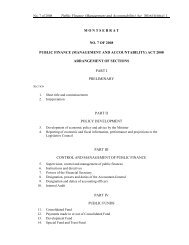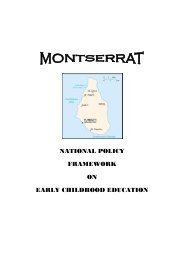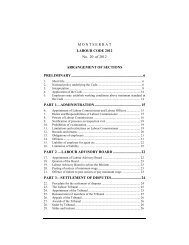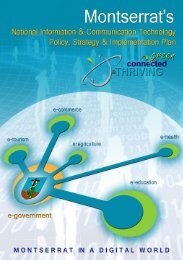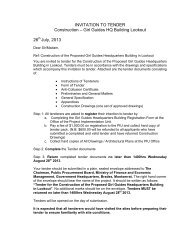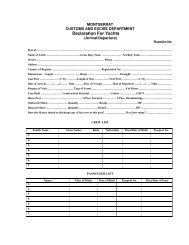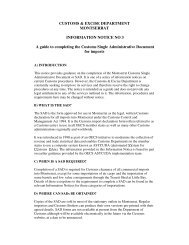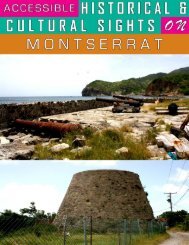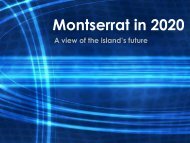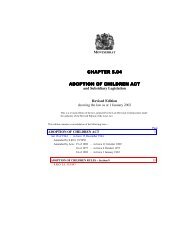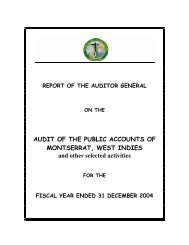Montserrat Survey of Living Conditions (MSLC) Executive Summary
Montserrat Survey of Living Conditions (MSLC) Executive Summary
Montserrat Survey of Living Conditions (MSLC) Executive Summary
Create successful ePaper yourself
Turn your PDF publications into a flip-book with our unique Google optimized e-Paper software.
<strong>Montserrat</strong> <strong>Survey</strong> <strong>of</strong> <strong>Living</strong> <strong>Conditions</strong><strong>Executive</strong> <strong>Summary</strong>Total social spending (education, health and social welfare) rose from EC$15.6 million in 2002 to EC$23.4million in 2007; around 1/3rd <strong>of</strong> this expenditure was on education and 2/3rds on health and socialwelfare. This expenditure has maintained a fairly constant share <strong>of</strong> total government recurrent expenditure<strong>of</strong> around 25%.2.4 EmploymentBetween 2001 and 2006, reconstruction activities led to employment increasing by almost 50% andunemployment dropping slightly to 12%. Women made up 44% <strong>of</strong> the active population. The pattern <strong>of</strong>employment also changed substantially between 1991 and 2001 with the government becoming by somemargin the most important sector accounting for 45% <strong>of</strong> total employment – a pattern that had changedlittle by 2008/09 when the self employed accounted for 19% <strong>of</strong> those working and 35% were privatesector employees. The principal trend in terms <strong>of</strong> occupational groupings, evident since 1991, is increasingproportions in both the most skilled (white collar) and least skilled (elementary) occupations; in contrast,the proportions <strong>of</strong> sales and skilled manual workers both decreased (Table ES2).Table ES2. Employment CharacteristicsType <strong>of</strong> Employment 1991 2001 2008/09Change 1991-2008/09Government/ Statutory Bodies 27% 45% 46% +19%Private employee 55% 39% 35% -20%Self employed 18% 16% 19% +1%Occupational GroupingManagerial, Pr<strong>of</strong>essional, Technical 24% 30% 34% +10%Clerical and Sales 24% 27% 21% -3%Crafts and Skilled Manual 34% 25% 18% -16%Unskilled Elementary 18% 18% 26% +8%Total 100% 100% 100%Sources: 1991 and 2001 Censuses, Listing <strong>Survey</strong> 2006, SLC 2008/09Employment in construction and government (including health and education) dominate the economywith around 60% <strong>of</strong> all employment. There is negligible employment in agriculture or manufacturing.In 2001, non-nationals accounted for 22% <strong>of</strong> employment on the island. While they were found in alloccupations and industrial sectors, the proportions vary substantially: non-nationals are ‘over-represented’ 6in the unskilled, craft and pr<strong>of</strong>essional groups, i.e. at both at both ends <strong>of</strong> the skills continuum. In terms<strong>of</strong> industrial sectors, they provide at least 30% <strong>of</strong> employment in domestic service, hotels, constructionand manufacturing; conversely, they are under-represented in government which is the most importantemployment sector <strong>of</strong> all.6 I.e. NNAT share <strong>of</strong> employment in an occupational group/ industrial sector is greater than their share <strong>of</strong> totalemployment.<strong>Montserrat</strong> Country Poverty Assessment, Final ReportHalcrow Group Limited, July 2012.ES6




